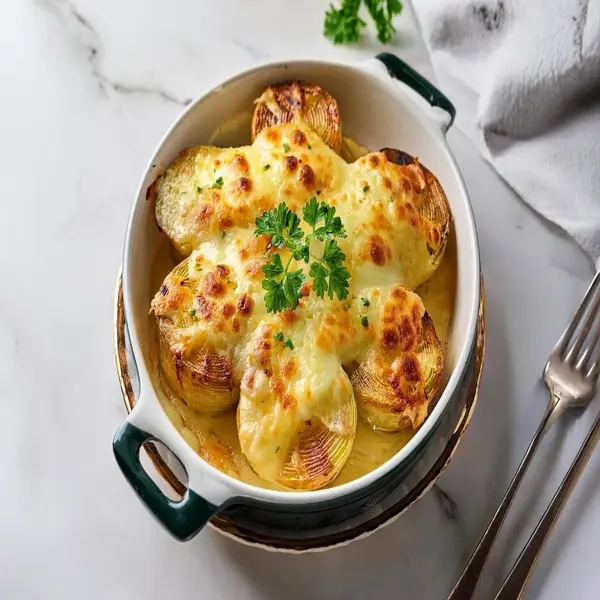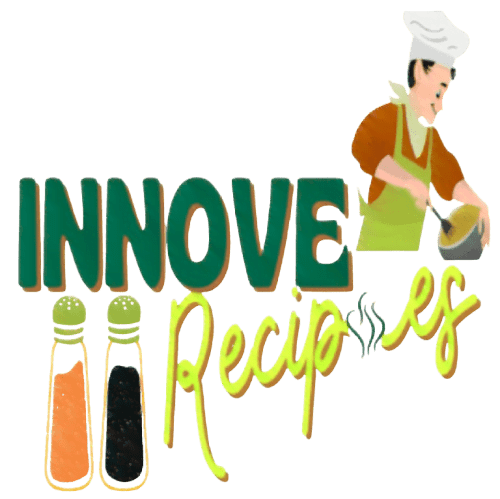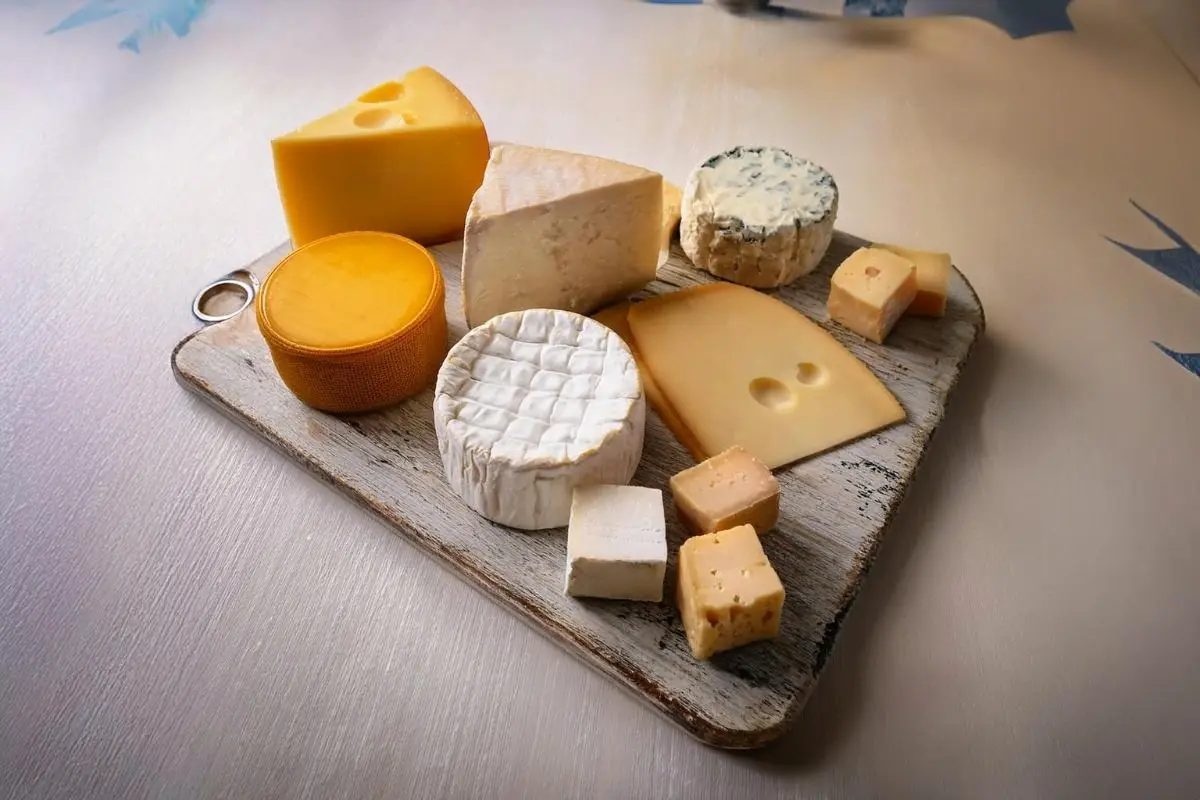Introduction :
Potatoes are one of the most versatile ingredients, and pairing them with the right cheese can elevate your dish to a whole new level. Whether you’re making mashed potatoes, baked potatoes, scalloped potatoes, or even fries, the type of cheese you choose plays a critical role in flavor and texture. This article will guide you through the best cheeses for each kind of potato dish, teach you how to make a mouthwatering cheesy potato recipe, and even answer some of the most common questions about pairing cheese with potatoes.
Let’s dive into this detailed guide and discover which cheese is best for potatoes and how to make the most out of these two beloved ingredients.
Why Choosing the Right Cheese Matters for Potatoes
The Relationship Between Cheese and Potatoes
To begin with, potatoes and cheese are the ultimate comfort food pairing. While potatoes provide a soft, starchy base, cheese brings bold flavors, creaminess, and even a crispy crust when baked. This combination makes cheesy potato dishes popular across cuisines. For example, baked potatoes often need a gooey topping like cheddar, whereas scalloped potatoes benefit from a more refined cheese like Gruyère.
Moreover, the type of cheese you choose can significantly impact the dish’s taste and consistency. Some cheeses melt smoothly, while others provide a sharper, saltier bite. When making dishes like cheesy mashed potatoes or casseroles, it’s essential to select a cheese that complements the dish’s texture and flavor.
Types of Cheese for Different Potato Recipes
- Cheddar Cheese for Baked Potatoes
Cheddar is arguably the most versatile cheese for potatoes. Its sharpness pairs beautifully with the neutral flavor of baked or mashed potatoes. It also melts exceptionally well, creating that signature gooey texture we all love. - Gruyère for Sophisticated Dishes
Gruyère is a top choice for recipes like potato gratins and scalloped potatoes. Its nutty flavor and smooth melting quality make it a gourmet option. - Mozzarella for Stretchiness
When you want a cheese pull, mozzarella is the go-to. It works particularly well in dishes where a stretchy, melty consistency is desired.
Melting Qualities of Cheese for Potatoes
While all cheeses bring unique flavors, their melting properties vary. For dishes like cheesy scalloped potatoes, it’s crucial to use a cheese that melts uniformly to coat the potatoes evenly. Cheeses like Gruyère, cheddar, and mozzarella excel in this area, while harder cheeses like Parmesan are better as toppings.
Understanding these qualities ensures that you not only select the best cheese for flavor but also achieve the perfect texture. So, the next time you ask yourself, which cheese is best for potatoes?, remember that it depends on the dish you’re preparing.
The Best Cheeses for Different Potato Dishes
When it comes to pairing cheese with potatoes, the dish you’re preparing plays a vital role in determining the best choice. From the smooth creaminess of mashed potatoes to the golden crust of scalloped potatoes, the cheese you select can completely transform the outcome. Below, we’ll break down the top cheeses for a variety of potato dishes and explore why they’re perfect for each preparation.
Cheddar Cheese: A Classic for Any Dish
Cheddar cheese is one of the most popular choices for potatoes—and for good reason. Its sharp flavor pairs perfectly with the mild, starchy taste of potatoes. Additionally, cheddar melts beautifully, making it ideal for mashed potatoes, baked potatoes, and cheesy casseroles.
- Perfect Pairings
Use sharp cheddar for baked potatoes to add a bold kick, or mix it into mashed potatoes for a rich, creamy finish. Cheddar is also excellent in dishes like cheesy hash browns and potato gratins, where its meltability shines. - Why It’s the Best
Its balance of sharpness and smooth texture ensures it doesn’t overpower the dish but still adds enough flavor to make it irresistible.
Gruyère: The Gourmet Option
For more sophisticated dishes, Gruyère is often the cheese of choice. Its nutty, slightly sweet flavor elevates recipes like scalloped potatoes or potato gratins. Moreover, Gruyère melts evenly, creating a velvety sauce that coats each potato slice perfectly.
- Perfect Pairings
Gruyère works best in recipes where the cheese takes center stage. Try it in scalloped potatoes layered with cream or a gratin dauphinoise for a luxurious side dish. - Why It’s the Best
Its complex flavor and smooth melting qualities make Gruyère a top choice for potato dishes that need an upscale touch.
Mozzarella: Stretchy and Mild
If you’re looking for that satisfying cheese pull, mozzarella is the way to go. Its mild flavor complements potatoes without overpowering them, making it an excellent option for dishes like stuffed potatoes or cheesy potato casseroles.
- Perfect Pairings
Use mozzarella for loaded baked potatoes or as a layer in potato casseroles where you want a stretchy, gooey texture. - Why It’s the Best
Mozzarella’s melting properties make it ideal for creating a luscious, stretchy layer of cheese that enhances the dish’s texture.
Parmesan: The Finishing Touch
Although Parmesan isn’t a melting cheese, it’s perfect for sprinkling on top of roasted or baked potatoes. Its salty, umami flavor adds depth, while its ability to crisp up in the oven makes it a favorite for creating golden, cheesy crusts.
- Perfect Pairings
Use grated Parmesan as a topping for roasted potato wedges, baked potato skins, or scalloped potatoes. You can also combine it with cheddar or Gruyère for added complexity. - Why It’s the Best
Parmesan enhances the dish with its bold flavor and creates a crunchy crust that contrasts beautifully with the soft texture of potatoes.
Other Cheeses to Consider
- Cream Cheese: Great for mashed potatoes, adding creaminess and a subtle tang.
- Gouda: A smoky, rich cheese that pairs well with roasted or grilled potatoes.
- Blue Cheese: Perfect for adventurous eaters, offering a bold, tangy flavor in dishes like loaded potato skins or salads.
Choosing the right cheese depends on the flavors and textures you want to achieve. By understanding the unique qualities of each cheese, you can ele
Recipe for Cheesy Scalloped Potatoes

When discussing which cheese is best for potatoes, scalloped potatoes stand out as a quintessential dish that showcases the perfect pairing of potatoes and cheese. This recipe combines layers of thinly sliced potatoes with a creamy cheese sauce for a dish that is rich, comforting, and sure to impress at any meal. Let’s walk through the ingredients and step-by-step instructions to create this mouthwatering classic.
Ingredients List And How to Layer the Best Cheeses for Scalloped Potatoes
To create the ultimate cheesy scalloped potatoes, you’ll need the following ingredients:
- 6 medium Yukon Gold potatoes, peeled and thinly sliced
- 2 cups shredded sharp cheddar cheese
- 1 cup shredded Gruyère cheese
- 1/2 cup grated Parmesan cheese
- 2 cups heavy cream
- 1 clove garlic, minced
- 1 teaspoon salt
- 1/2 teaspoon black pepper
- 1 tablespoon unsalted butter, for greasing the baking dish
Step-by-Step Instructions for Using the Best Cheese with Potatoes
- Preheat and Prepare
- Preheat your oven to 375°F (190°C).
- Grease a 9×13-inch baking dish with the unsalted butter.
- Slice the Potatoes
- Peel the potatoes and slice them thinly using a sharp knife or mandoline slicer. Aim for uniform slices about 1/8-inch thick to ensure even cooking.
- Prepare the Cheese Sauce
- In a medium saucepan, heat the heavy cream over medium heat. Add the minced garlic, salt, and pepper. Stir occasionally to infuse the cream with flavor.
- Gradually add the cheddar cheese and Gruyère to the cream, stirring constantly until the cheese is fully melted and the sauce is smooth.
- Layer the Potatoes and Sauce
- Arrange half of the potato slices in an even layer on the bottom of the greased baking dish.
- Pour half of the cheese sauce over the potatoes, spreading it evenly to cover all the slices.
- Repeat with the remaining potatoes and cheese sauce, creating a second layer.
- Add the Parmesan Topping
- Sprinkle the grated Parmesan evenly over the top layer of potatoes. This will create a crispy, golden crust during baking.
- Bake the Dish
- Cover the dish with aluminum foil and bake for 40 minutes. This allows the potatoes to cook through without over-browning the top.
- After 40 minutes, remove the foil and bake for an additional 15–20 minutes, or until the top is golden and bubbly.
- Let It Rest
- Remove the scalloped potatoes from the oven and let them rest for 10 minutes before serving. This helps the sauce thicken and makes serving easier.
Tips for Success
- For an extra layer of flavor, sprinkle fresh herbs like parsley or thyme on top just before serving.
- If you prefer a thicker sauce, use whole milk in combination with the heavy cream.
- To save time, slice the potatoes ahead of time and store them in cold water to prevent browning.
This recipe highlights some of the best cheeses for potatoes—cheddar, Gruyère, and Parmesan—working together to create a rich, creamy dish with a perfectly crisp topping. Serve it alongside roasted chicken or a fresh salad, and it’s sure to be the star of the meal.
Nutritional Information and Adjustments for Cheesy Potato Dishes
Cheesy potato dishes are undeniably delicious, but understanding their nutritional value allows you to enjoy them mindfully. Whether you’re making scalloped potatoes, mashed potatoes, or a cheesy casserole, this section will break down the nutritional content and offer tips for lighter variations that don’t sacrifice flavor.
How Nutritional Content Changes Based on Which Cheese You Use (Per 100g)
| Nutrient | Amount |
|---|---|
| Calories | 245 kcal |
| Total Fat | 14 g |
| Saturated Fat | 9 g |
| Cholesterol | 38 mg |
| Sodium | 360 mg |
| Total Carbohydrates | 20 g |
| Dietary Fiber | 2 g |
| Sugars | 2 g |
| Protein | 7 g |
This breakdown is based on the standard recipe using cheddar, Gruyère, Parmesan, and heavy cream. While the dish is rich, it provides a satisfying balance of carbohydrates, fats, and proteins, making it perfect as a comforting side dish.
Tips for Making Cheesy Potato Recipes Lighter
- Swap Heavy Cream for Milk or Half-and-Half
- One of the easiest ways to reduce calories and fat is to replace heavy cream with whole milk or a mixture of milk and Greek yogurt. This keeps the sauce creamy while cutting back on saturated fat.
- Use Reduced-Fat Cheese
- Opt for reduced-fat versions of cheddar or mozzarella. These cheeses still melt well but contain fewer calories and fat. However, avoid fat-free cheeses, as they don’t melt or taste the same.
- Incorporate Vegetables for More Fiber
- Add layers of thinly sliced zucchini, spinach, or even cauliflower between the potato layers. These vegetables not only boost the dish’s fiber and nutrient content but also add more color and texture.
- Portion Control
- Serve cheesy potatoes as a side dish alongside lean proteins like grilled chicken or fish and a fresh salad. This ensures a balanced meal without overindulging.
Making It Suitable for Dietary Restrictions
- Vegetarian-Friendly Option
Replace cream of chicken soup (if used in a casserole variation) with cream of mushroom or cream of celery soup for a vegetarian alternative. - Gluten-Free Adaptation
To make the dish gluten-free, ensure that any added soups or thickeners are certified gluten-free. Cornstarch can be a great substitute for flour when thickening the cheese sauce. - Low-Sodium Version
Use low-sodium cheese and skip additional salt in the recipe. You can enhance the flavor with fresh herbs like thyme, rosemary, or parsley.
Why This Dish Can Fit Into a Balanced Diet
Despite being indulgent, cheesy potato dishes can still fit into a balanced diet when eaten in moderation. The combination of protein from the cheese and carbohydrates from the potatoes makes it a satisfying choice, especially when paired with lighter sides or proteins. Adjusting the ingredients slightly can make it healthier while retaining its signature comfort-food appeal.
By following these nutritional tips and adjustments, you can enjoy the cheesy potatoes with Gruyère, cheddar, and Parmesan guilt-free while ensuring your meal is balanced and delicious.
Frequently Asked Questions About Cheese for Potatoes

When it comes to choosing which cheese is best for potatoes, many questions often arise. From selecting the right cheese to understanding how to make the perfect cheesy potato dish, this section answers some of the most common queries.
Which cheese is best for mashed potatoes?
Mashed potatoes benefit from creamy, meltable cheeses like cheddar, cream cheese, or Parmesan. Cheddar brings sharpness, while cream cheese adds tangy creaminess. Parmesan, on the other hand, lends a subtle salty, umami flavor when sprinkled on top. For a richer taste, combine two or three cheeses.
What cheese melts best for baked potatoes?
For baked potatoes, cheddar and mozzarella are excellent choices. Cheddar melts smoothly while maintaining a sharp flavor, making it a classic option. Mozzarella adds a stretchy, gooey texture, especially when layered with other cheeses. To create a flavor-packed topping, try combining cheddar, mozzarella, and Parmesan.
Can I mix cheeses in one potato recipe?
Absolutely! In fact, mixing cheeses often enhances the flavor and texture of potato dishes. For example, combining Gruyère and Parmesan creates a luxurious topping for scalloped potatoes, while cheddar and cream cheese add creaminess to mashed potatoes. Mixing cheeses also allows you to balance bold flavors with milder ones.
What’s the best cheese for crispy toppings on potato dishes?
When aiming for a crispy, golden topping, Parmesan and Gruyère are the best choices. Their lower moisture content allows them to form a perfect crust when baked. Simply sprinkle grated cheese over the potatoes before placing them in the oven, and watch as it turns golden brown and irresistibly crispy.
Is mozzarella too mild for potatoes?
While mozzarella is mild, its exceptional melting quality makes it a great choice for dishes where texture is a priority, such as casseroles or loaded baked potatoes. To boost the flavor, pair mozzarella with sharper cheeses like cheddar or Gruyère. This combination ensures the dish has both flavor and the desired cheesy stretch.
Can I use non-dairy cheese for potato recipes?
Yes, non-dairy or vegan cheese can work in potato dishes, though results may vary depending on the brand. Look for non-dairy cheeses designed for melting, such as cashew-based or coconut oil-based varieties. These are great substitutes for creating creamy, cheesy sauces or gooey layers in casseroles.
How do I prevent cheese from clumping in potato dishes?
Clumping can be avoided by following a few simple tips:
- Grate the Cheese Freshly: Pre-shredded cheeses often contain anti-caking agents that prevent smooth melting.
- Use Low Heat: Overheating cheese can cause it to separate and clump. Heat it slowly over low heat for a smoother sauce.
- Add Cheese Gradually: Stir cheese into sauces a little at a time to ensure even melting.
Practical Tips for Perfect Cheesy Potatoes
- Seasoning First: Always season potatoes with salt and pepper before adding cheese to ensure balanced flavor.
- Layer Wisely: For casseroles and scalloped potatoes, alternate layers of potatoes and cheese to evenly distribute the flavors.
- Serve Hot: Cheesy dishes taste best when served hot and fresh from the oven, as reheating can change the texture of the cheese.
By addressing these common questions, you can feel confident when preparing any cheesy potato dish. Whether you’re making mashed potatoes, a casserole, or scalloped potatoes, selecting and using the right cheese is the key to success.
Conclusion :
When deciding which cheese is best for potatoes, it all comes down to the dish and your flavor preferences. Cheddar adds sharpness, Gruyère brings sophistication, and mozzarella offers irresistible stretchiness. Each cheese enhances potatoes in its unique way, whether you’re making mashed potatoes, baked potatoes, or a cheesy casserole. By understanding the qualities of different cheeses and how they complement potato textures, you can create dishes that are both delicious and satisfying. With endless possibilities, pairing cheese with potatoes guarantees a comforting, flavorful experience every time. Try experimenting with combinations to find your perfect match!

